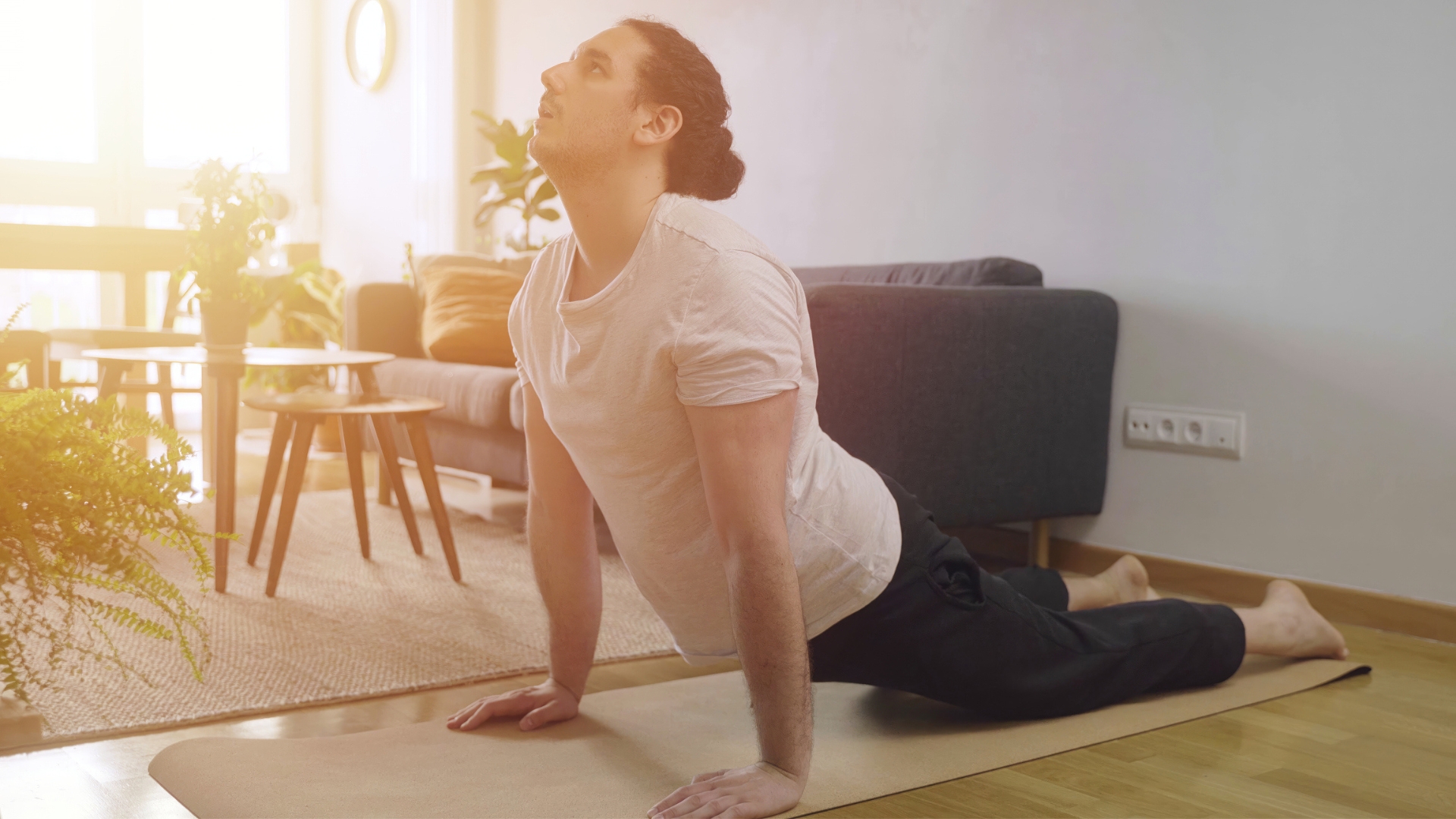
- Seven McKenzie Method stretches to treat lower back pain
- 1. Spinal relaxation
- 2. Prone extension
- 3. Prone extension with straight arms
- 4. Extension from standing
- 5. Supine flexion
- 6. Flexion from seated
- 7. Flexion from standing
- What you need to know about the McKenzie Method
- When to rest and when to move
If you've been nursing a bad back for a while—and your doctor has ruled out anything serious—the McKenzie Method is an effective method for managing lower-back pain at home.
Also known as the McKenzie Method of Mechanical Diagnosis and Therapy (MDT), this system of assessments and exercises was developed by New Zealand physiotherapist Robin McKenzie in 1981. It’s now a globally recognized treatment for back, neck and limb pain and used to identify, manage and prevent spinal disorders.
Below we've outlined seven McKenzie Method exercises that can help alleviate back pain, mobilize the spine and support healthy spinal function.
However, to assess your individual needs and tailor the exercises to you, it's best to work with a certified physical therapist and MDT practitioner. Speak to your doctor or healthcare advisor before embarking on the MDT exercises if you have persistent or severe back pain.
Seven McKenzie Method stretches to treat lower back pain
A post shared by Fit&Well (@wearefitandwell)
A photo posted by on
These movements are designed to be performed in sequence, with each stretch gradually preparing the body for the next. Listen to your body throughout and stop if you feel any sharp or worsening pain.
Once you progress to exercises five, six and seven, it's recommended you return to repeat exercise three (prone extension with straight arms).
These stretches can be performed several times per day, but allow plenty of time between each session to see how the body responds.
Start your week with achievable workout ideas, health tips and wellbeing advice in your inbox.
At the end of the session, you can spend a few minutes lying on your back with a rolled up towel under your lower back to help maintain the spine’s natural curvature.
1. Spinal relaxation
Time: 2-3min
- Lie on your front on the floor, arms by your sides and head turned to one side.
- Try to release any tension from your lower back, hips and legs.
- Breathe deeply and slowly and allow yourself to relax fully.
Expert tip: This exercise prepares your body for the session so take your time to fully relax.
2. Prone extension
Time: 2-3min
- From the position of lying down on your front, prop yourself up on your forearms, elbows under your shoulders, to extend your lower spine.
- If this feels uncomfortable, move your elbows slightly forward to lessen the extension through your spine and keep your hips stable.
- Hold and breathe deeply and slowly to help release tension from your lower back, hips and legs.
3. Prone extension with straight arms
Reps: 10
- From the the position above—lying on your front while propped up on your forearms—move both hands to under your shoulders.
- Press through the palms to lift your chest, straightening your arms (you can keep elbows slightly bent if you need).
- Let your hips sink into the floor while keeping your lower-body relaxed.
- Hold then lower and repeat, gradually increasing the stretch each time.
4. Extension from standing
Reps: 10
- Stand with feet hip-width apart, hands on your lower back, just above your buttocks.
- Very gently arch backwards at the waist.
- Hold this position for one to two seconds, then return to standing.
- Complete the repetitions, aiming to gradually increase the stretch.
Expert tip: This mirrors exercise three, replicating spinal extension but from a standing position.
5. Supine flexion
Reps: 10
- Lie on your back, knees bent and feet on the floor.
- Gently hug your knees into your chest.
- Hold for one to two seconds, then release.
- Avoid raising your head or straightening your legs.
Expert tip: The next three exercises promote flexion through the spine.
6. Flexion from seated
Reps: 10
- Sit on the edge of a sturdy chair, feet and knees wide apart.
- Gently bend forward from your waist to reach your ankles or the floor between your feet.
- Return to sitting upright.
- Complete the repetitions, aiming to gradually increase the stretch.
Expert tip: Only progress to this move if you can safely practice exercise five consistently for at least one week without any discomfort.
7. Flexion from standing
Reps: 10
- Stand with feet hip-width apart, arms by your sides.
- Slowly fold down from your waist, sliding your hands down your legs for support.
- Lower only as far as you can without pain.
- Return to standing.
- Complete the repetitions, aiming to gradually increase the stretch.
Expert tip: Only progress if you can tolerate exercise six consistently for at least two weeks.
What you need to know about the McKenzie Method
"The McKenzie Method is a valuable tool in the treatment of low back pain," says Dr Amir Mahajer, board certified osteopathic physician and president of the American Osteopathic College of Physical Medicine and Rehabilitation.
But he cautions that fully understanding which exercises to do for different issues is crucial.
For example, if you have a disc-related issue, then extension based exercises like prone press-ups or prone extension (as outlined above) might be helpful.
If you have a facet joint-related issue, flexion exercises such as supine flexion stretch (also outlined above) or lateral movements may be more beneficial.
"The exercises should always be adjusted based on the patient’s response and their progress throughout the rehabilitation process," he tells Fit&Well.
"The McKenzie Method relies heavily on this principle, and exercises should be selected based on the patient’s specific needs to ensure optimal outcomes."
When to rest and when to move
Mahajer also emphasizes that "most benign spinal issues will improve with time and rehabilitation".
Understanding this, he says, can alleviate the fear of movement—known as kinesiophobia—which is common among patients with back pain.
"Fear of further injury often leads to more disability," he says, but reassurance from a physician or therapist can help you regain confidence in your body’s ability to heal.
"Understanding that movement is safe, and that rehabilitation can alleviate pain, is crucial for the patient’s recovery and mental well-being."
Ultimately, the McKenzie Method depends on a collaborative approach between physician and therapist, where both parties are working together to help the patient regain full, pain-free motion and prevent future issues.

Sam Rider is an experienced freelance journalist, specialising in health, fitness and wellness. He is also a REPS level 3 qualified personal trainer.
You must confirm your public display name before commenting
Please logout and then login again, you will then be prompted to enter your display name.
